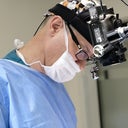My side profile has always been an insecurity of mine. I had a plastic surgeon tell me that I wouldn’t see a benefit from a rhinoplasty. But I would like a second opinion before scheduling another consult with a different surgeon. Would I be a good candidate?
Answers (16)
From board-certified doctors and trusted medical professionals
Dr. Steven M. Denenberg, MD

Dr. Steven M. Denenberg, MD
Board Certified Facial Plastic Surgeon
Answer
Dr. Yannis Alexandrides, MD, FACS

Dr. Yannis Alexandrides, MD, FACS
Specialist Registered Plastic Surgeon
Answer
Dr. Gianfranco Frojo, MD

Dr. Gianfranco Frojo, MD
Board Certified Plastic Surgeon
Answer
Dr. Andrew Miller, MD

Dr. Andrew Miller, MD
Board Certified Facial Plastic Surgeon
Answer
Dr. Eric M. Joseph, MD

Dr. Eric M. Joseph, MD
Board Certified Facial Plastic Surgeon
Answer
Dr. Philip S. Schoenfeld, MD, FACS

Dr. Philip S. Schoenfeld, MD, FACS
Board Certified Facial Plastic Surgeon
Answer
Dr. Gary M. Horndeski, MD

Dr. Gary M. Horndeski, MD
Board Certified Plastic Surgeon
Answer
Dr. Richard G. Reish, MD, FACS

Dr. Richard G. Reish, MD, FACS
Board Certified Plastic Surgeon
Answer
More Rhinoplasty Questions
See all Rhinoplasty Q&AWE SEND PRETTY
EMAILS
What’s trending? Who’s turning heads? Which TikTok myths need busting? We’ve got you. No fluff, no gatekeeping—just real talk. Get our free, unfiltered newsletter.


